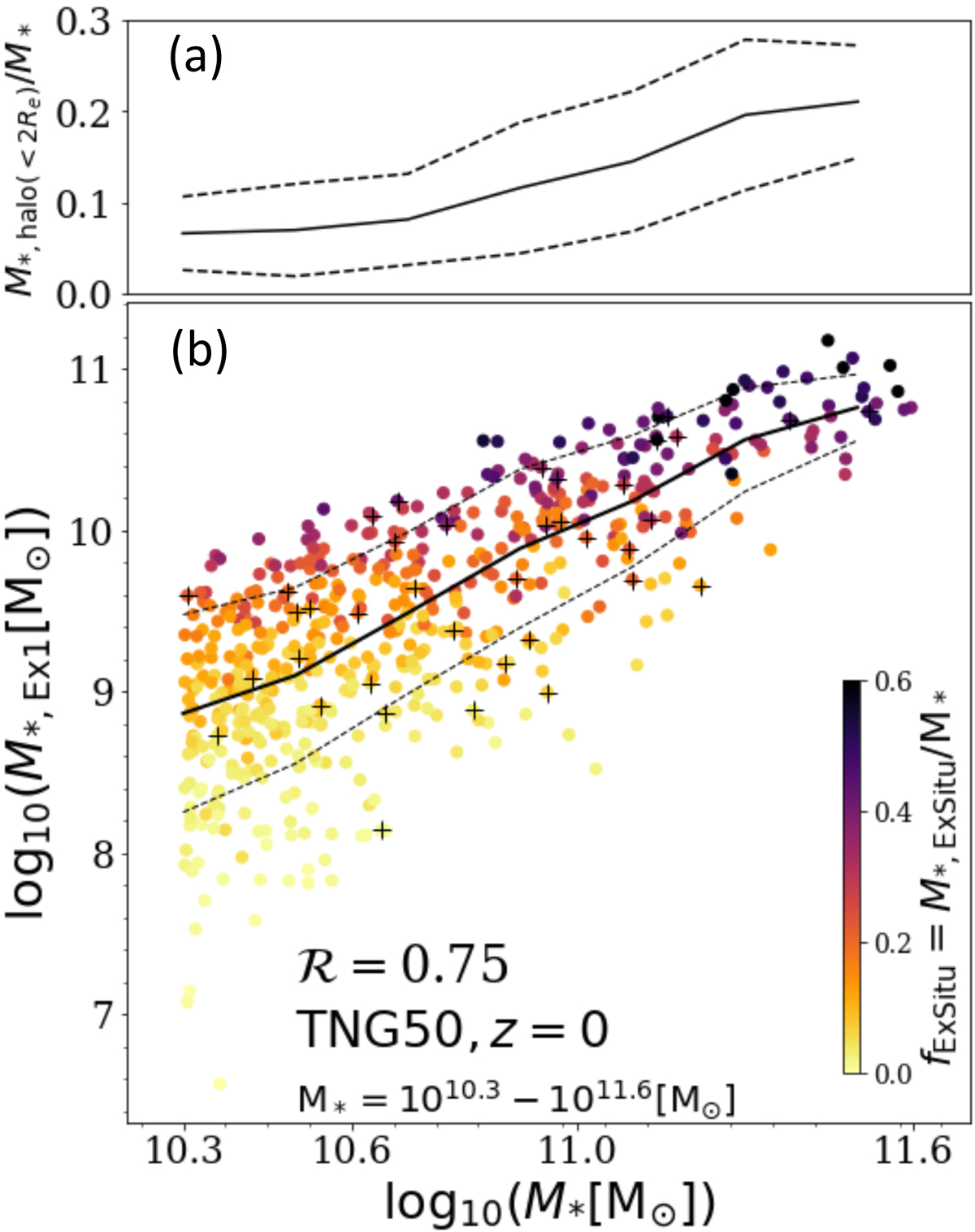Fig. C.1.

Download original image
Correlation between a galaxy’s stellar mass, M*, and the stellar mass accreted from the most massive merger according to TNG50. Panel (a): Mass fraction of the hot inner stellar halo, M*, halo(r < 2Re), compared to the total stellar mass, M*, as a function of M*. The solid line is the average, and the dashed lines are ±1σ scatter. In this mass range, the hot inner stellar halo mass contributes only ∼5%−30% of the total stellar mass. Panel (b): Similar to the right panel of Fig. 5, but using the total stellar mass, M*, instead of the hot inner stellar halo mass along the x axis. Compared to Fig. 5, the correlation becomes weaker with ℛ = 0.75 and the 1σ scatter is about 0.1 dex larger in general. The ex situ fraction does not increase as gradually with increasing x as in Fig. 5, and the correlation of M* with fExSitu is also weaker than M*, halo(r < 2Re).
Current usage metrics show cumulative count of Article Views (full-text article views including HTML views, PDF and ePub downloads, according to the available data) and Abstracts Views on Vision4Press platform.
Data correspond to usage on the plateform after 2015. The current usage metrics is available 48-96 hours after online publication and is updated daily on week days.
Initial download of the metrics may take a while.


